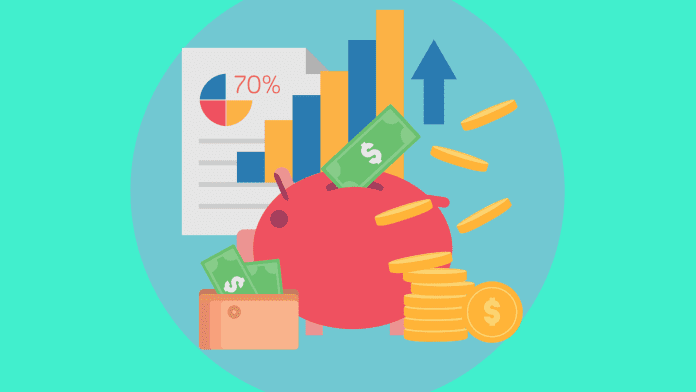If you plan to build your app and launch it in the market, development is not the most expensive obstacle in the way. You can easily use app making solutions like AppMySite to make your own app without breaking the bank.
The costs you really need to think about are mostly related to marketing.
It is impossible to run an upstanding marketing campaign these days without a reasonable budget. Even SEO-based marketing campaigns have serious expenses. It thus takes some amount of investment to get a marketing campaign going.
You cannot simply keep spending money on marketing without organizing your expenses and investments systematically. In other words, you need to set up a rock solid marketing budget that underlines where each penny is going. This will in turn help your marketing team streamline their efforts as well.
Marketing budget – Essentials
It is easy to claim that you need a marketing budget. However, you need to first understand what a marketing budget is.
A marketing budget is a breakdown of how you plan on spending money to promote your mobile app. It is a comprehensive breakdown of where you plan on spending money.
It is generally wise to have a long-term and short-term budget. This is because it is difficult to predict spending needs in the distant future. You should thus have a yearly marketing budget to give your campaign a general direction, and a monthly budget to account for ad-hoc requirements.
If you are still setting up a new app business and working with a small cash flow, the importance of marketing budget might seem overstated.
Why is setting a budget important?
It is difficult to see the importance of a marketing budget when you are working with a small amount of capital. Why then should you set up a marketing budget?
- Smart allocation – Making prudent financial decisions is even more important when you are dealing with a small level of capital. A budget can help you see whether your marketing investment id yielding a positive return.
- Goal management – You can always set up more accurate goals by using your budget as a yardstick. For instance, if investing $100 in app install campaigns brought you 200 conversions, you are right to expect 400 conversions or more by investing $200. Instead of second guessing your goals, you can use your marketing budget as a yardstick.
- Long-term planning – Spending money blindly often leaves you in a bad position because you cannot plan your expenses effectively. Creating a budget can help you gauge the overall direction of your business and marketing strategy.
- Financial management – Unfettered spending without any planning is a clear sign of poor financial management. Marketing is never going to be your only cost. It is important to keep an account of all the money you spend on your marketing campaigns. A budget is thus very important for sound financial management.
How to set an app marketing budget?
We now know that a marketing budget is important for the success of your app. It is now important that you understand the brass tacks of creating a budget.
The following sections provide a guide on the steps you need to take to set up your marketing budget to promote your app.
#1 – Study your marketing funnel
Most marketing campaigns have a sales funnel. A funnel typically refers to the journey a customer goes through before downloading your app. Even if you have never actually tracked people going through a marketing funnel before downloading your app, the process is still going on.
Why are these funnels important from a budgeting standpoint?
A marketing funnel clearly helps you see the channels that lead to most conversions. It is a direct window into understanding how your audience discovers your app. You can use this information to appropriately allocate your marketing budget.
Broadly speaking, there are three main section of of a sales funnel you should focus on-
- Awareness – This is the stage where your prospects come across your app for the first time. Make a list of platforms and channels which educate and engage your prospects the most.
- Consideration – After your prospects know about your app, they weigh up the possibility of downloading it. Identify the techniques your prospects use to evaluate your app. Review platforms, comparison blog posts, and video breakdowns are some examples of consideration stage channels.
- Conversion – What is the final trigger that finally convinces a prospect to download your app? Make exclusive space in your budget for conversion-oriented channels.
Each of these stages have their own unique prominent channels. Knowledge of these channels will help you allocate capital to the right channels. It is important to understand the context of this data to make more informed decisions.
Let’s take an example. Assume your WooCommerce app relies on app store optimization in the awareness stage. Rather than blindly investing in ASO, take the information into context. Ask yourself the following questions-
- Why is ASO the primary channel for app awareness?
- Is ASO your primary channel because you are not focusing on other forms of marketing?
- Have you previously invested resources in ASO?
These questions are only to make sure that the prominent channels you identify are not getting engagement by default. If you don’t promote your app on any channel, ASO will automatically become your primary channel of awareness. It is important to view the data you get in the right context
Set your marketing budget based on the performance of each channel in helping grow your user base. To track funnel data, you can purchase any reliable mobile app analytics tool.
#2 – What are your goals?
We tend to assume that every app marketing campaign is driven towards getting downloads. This is a misguided perception. Not every app business has an acquisition-only approach when it comes to app marketing. Some companies want to promote the products listed on their app while others want you to buy a subscription.
The goal of your marketing campaign plays a key role in shaping the budget as well. Some goals require a greater level of investment.
Let’s take an example. Assume you build an app for your WordPress website using a free app maker. You want to put up some of your premium content behind a paywall and simultaneously start a subscription program.
Getting people to download your app is one thing. Persuading them to buy your subscription is another. The latter requires much more persuasion because customers have to make a monetary decision. The campaigns and tactics you will have to employ to create an active subscriber base will require a much higher level of spending.
Your goals thus have a big role to play in your marketing budget. Do not set a lofty goal if you don’t have the resources to meet it. Start with a smaller and feasible goal before jumping to a higher target.
#3 – Account for operating costs
As mentioned earlier, marketing is not your only expense. You have an entire mobile app business to manage. You cannot independently set up your marketing budget without accounting for other operating expenses.
It is thus important to do a thorough analysis of all your other operating costs. This includes expenses like server fee, employee salaries, daily ad-hoc requirements, SaaS subscriptions, utility bills, and more.
These expenses play a defining role in setting up your marketing budget. If the income you generate from your app does not cover your operational costs, the marketing budget will be spread thin.
The proficiency of your marketing campaign is also a factor here. Most outreach campaigns are driven towards enhancing app revenue. A poor campaign basically ensures you are tied down by operating costs and thus have little money for future campaigns.
The fate of your future marketing budgets is thus dependent on the performance of your current campaign. Well-run campaigns naturally bring revenue to your app and allow you to run more extravagant campaigns. This correlation clearly highlights the compound effect marketing campaigns have on the fate of your app business.
#4 – Select your channels
We discussed the importance of identifying the marketing channels you are going to promote your app on.
In this step, you finally have to make a decision on which channels you will deploy your marketing campaign on. Running a campaign on multiple channels at the same time is not really a wise decision for a small app business or startup. You need to identify the channel where you have the best chance of succeeding and target it.
Experimenting with search ads, paid social media reach, and email ads at the same time will spread your resources thin. Small companies don’t even have the personnel needed to constantly track engagement across every marketing channel.
Here is a small breakdown of how you can select the right channels-
- Run small budget experiments on different prominent channels you identify from your sales funnel.
- Compare engagement and conversion data from each.
- Run A/B tests on every channel to double-check the ability of a marketing channel to deliver results.
These steps will help you identify the right channel to deploy your marketing campaign. Keep running small tests on different channels from time to time. This is because the proficiency of a channel to help you reach your goals can keep changing over time due to changes in search and social algorithms.
#5 – Compare budget with other metrics
Once you set a goal and select your channels, you will have a clear numerical budget in front of you. However, this is not the end of the story. The final step is to compare your budget with other key app metrics to check the financial stability and viability of your campaign.
Let’s take an example. Assume your marketing budget is $5000 for the month of February. Your goal with this budget is to get to 10000 app downloads.
Your first job is to check the average cost per acquisition in the market. Currently, the CPA of a mobile app is around $4. With $5000, you can effectively only get 1250 downloads.
This is an estimate and not an accurate representation of your marketing budget. The only purpose of calculating this estimate is to help you see the gap you need to cover with your marketing strategy.
The next step is comparing the goal with the cost. How much money do you plan on making with 10,000 app downloads? If you cannot break even or exceed the marketing budget with 10,0000 app downloads, you should consider rethinking your approach.
Take into account metrics like customer lifetime value, conversion rate, and cost per acquisition before finally settling on a budget. These metrics will help you evaluate the financial viability of your budget. Do not forget to do these calculations as the success of your campaign depends on it.
Build an app for your website

Starting a mobile app is no longer a challenge. No-code app makers have ensured that you don’t need to learn how to build an app with coding.
The challenge now is marketing the app well and bringing it to a large audience. Setting up a good marketing budget is a big part of that. No form of marketing today realistically works without an investment of capital and time.
This piece covers the basics of a marketing budget and how you can set one up for your mobile app. The steps laid out here are not comprehensive. Something as important and complex as a budget requires rigorous marketing analysis. The points made here will set you in the right direction, but you should continue studying marketing budgets of other apps as well.
You can only make the right financial decisions for your mobile app by researching the success and mistakes made by companies before you.

